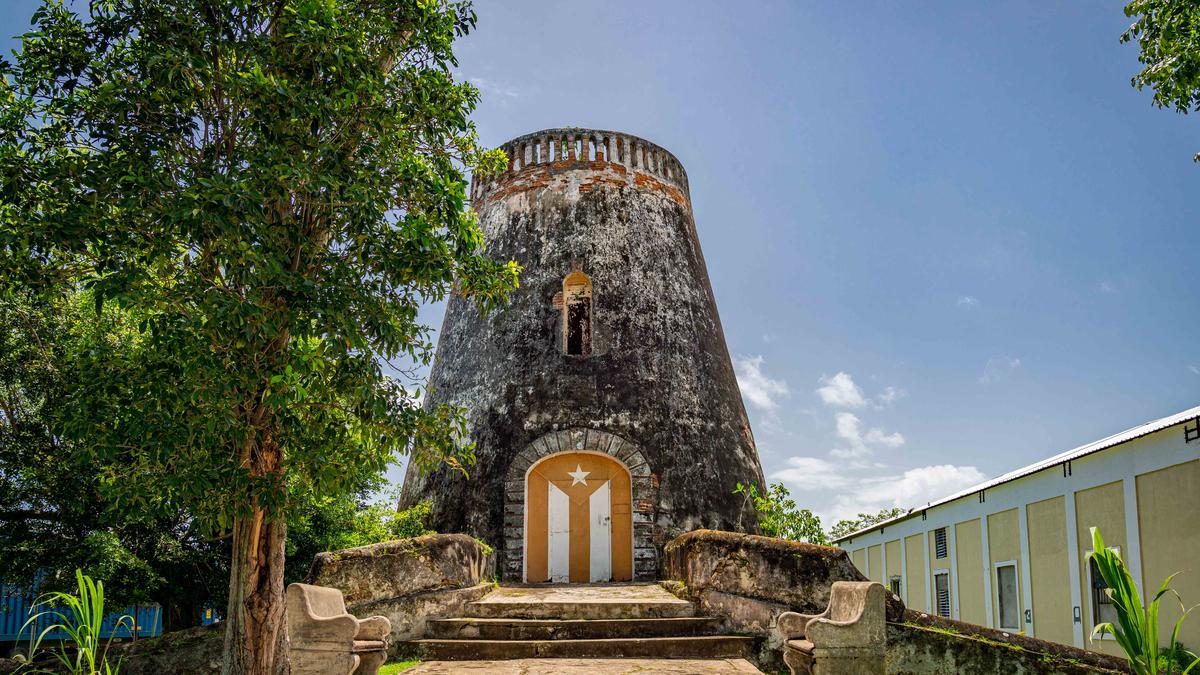The Ruins of the Central Plazuela in Barceloneta Witness a Past with a Sugar Cane Taste

Source: El Nuevo Día
Barceloneta.- Its origins date back to the mid-19th century, when the sugar cane industry was experiencing its golden age. The sugar marvel of Hacienda Plazuela, located on Highway PR-681 in Barceloneta, is kept alive with the conservation of structures such as a mill and several chimneys. Several of which -- over the years -- have aroused the curiosity of many.
According to the Barceloneta historian, José Luis Martínez-Domínguez, it was "Cornelio Kortright, a native of Santa Cruz and of English origin, who established this sugar mill in 1841 and called it Hacienda Plazuela. By 1907, the Plazuela Sugar Company emerged and was incorporated under the administration of Eduardo Georgetti."
Some chroniclers allude to the fact that the name "Plazuela" is due to the shape of the Hacienda. In its beginnings it looked like a large square where several buildings were built to make the area more productive.
Some of these buildings are still intact. And although the grounds are occupied by the municipal public works office, it is inevitable for visitors to stop and admire the ruins that are ideal for taking a good photograph.
There is a white building in the area that, during the better days of the sugar cane industry, worked as a warehouse to store the rustic machinery that was used daily by the laborers. There, a sugar mill with a windmill built with three floors was used as a laboratory to process the harvest.
"That laboratory is almost intact. You can't go inside, it's protected. That was where the cane refining tests were carried out," said Martínez-Domínguez while showing the building. From the outside, it gives the impression of being preserved according to its original state.
The structure, which has a Puerto Rican flag painted at the entrance, has a cylindrical shape. It is built of masonry, bricks, lime mortar, wooden beams and a cement ramp that leads to the interior of the building where the items for milling were also kept.
Before reaching the main entrance, the space has a small square in front with two cement seats where visitors can sit to admire this part of the marvel.
"The chimneys were there. And that's where the boilers and the warehouse were," the chronicler said enthusiastically, as he accompanied Somos Puerto Rico on a tour of the facilities.
At the back of this ruin, there is a rustic wooden house that emulates the typical Puerto Rican home of yesteryear and other benches. From the road you can see two huge chimneys, both with the name of the mill carved into their center.
At the time, this plant reached a production of more than 2,000 tons of sugar that was exported by boat. However, they faced inconveniences in delivering production due to the depth of La Palmita beach where the boats docked.
"Since the boats couldn't enter because it was too shallow, the people from the plant took the sugar and transported it on the well-known sugar cane train to the pier. Several boats would wait to collect the tons of sugar from there and would take it to the ship that was a little further out at sea. This was how the sugar cane was taken from here by boat," said the historian.
You can still see the remnants of the historic pier in the Palmas Altas sector of Barceloneta, a place very frequented by local tourism given the area's beaches and gastronomy.
